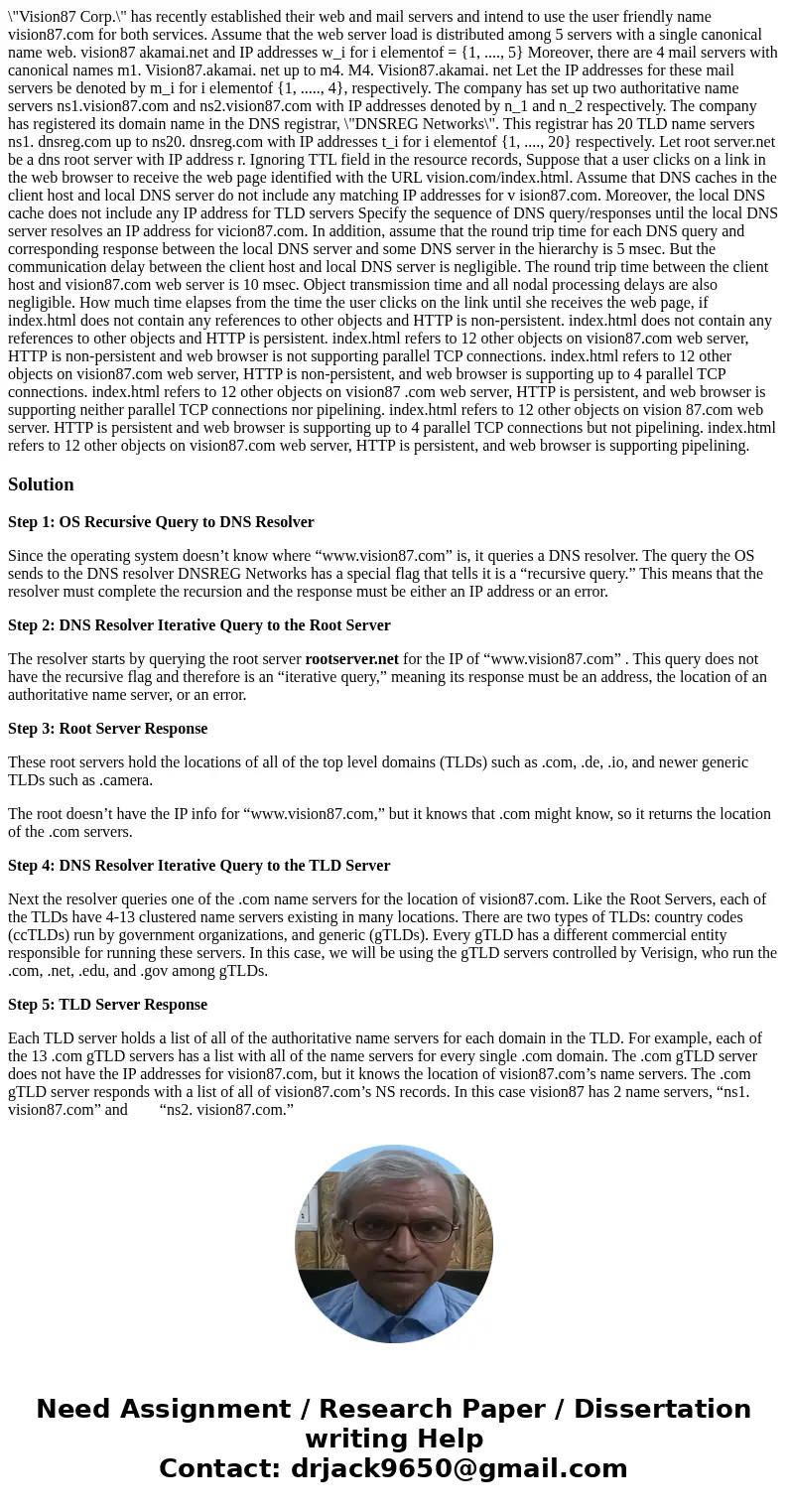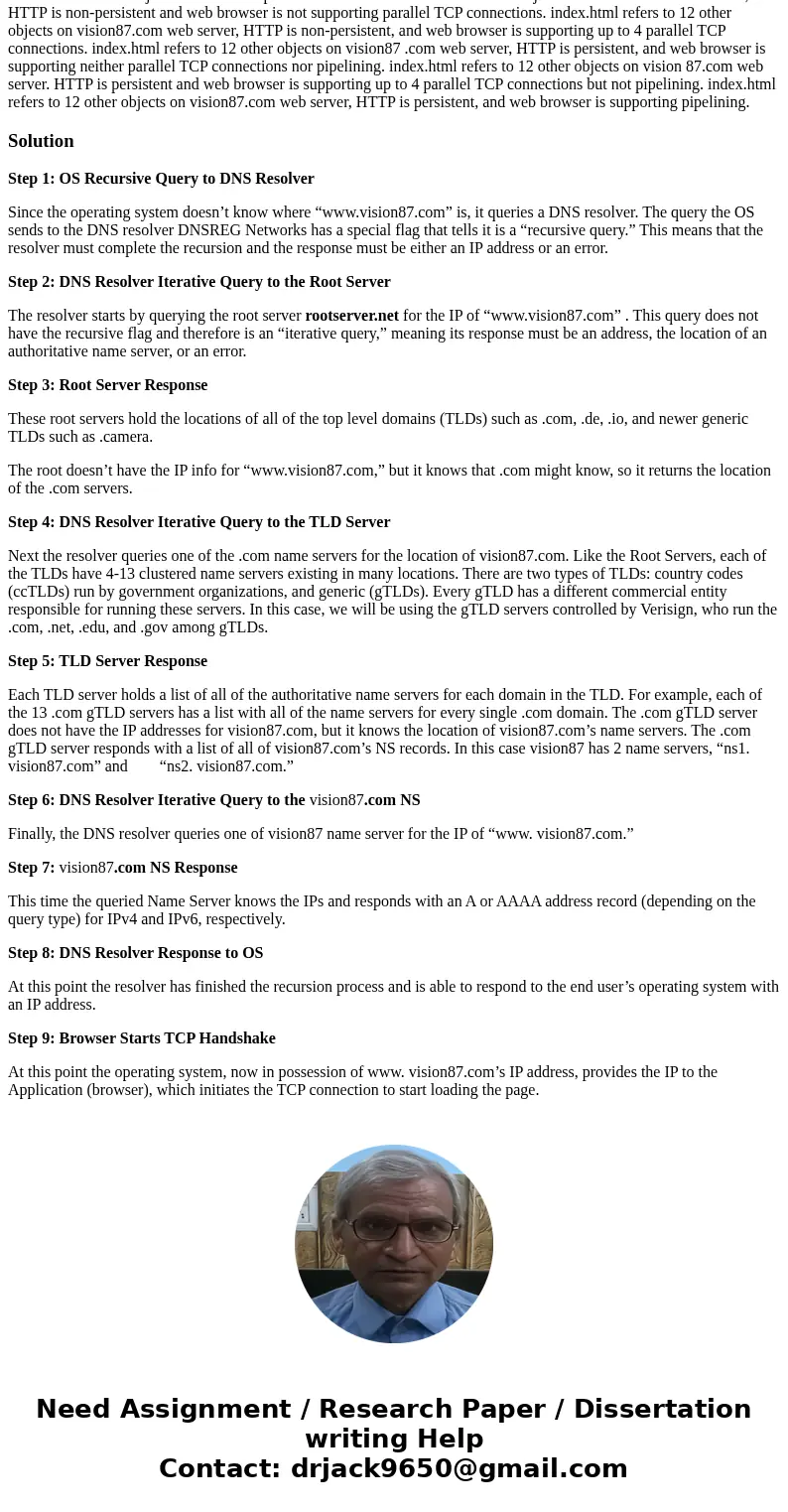Vision87 Corp has recently established their web and mail se
Solution
Step 1: OS Recursive Query to DNS Resolver
Since the operating system doesn’t know where “www.vision87.com” is, it queries a DNS resolver. The query the OS sends to the DNS resolver DNSREG Networks has a special flag that tells it is a “recursive query.” This means that the resolver must complete the recursion and the response must be either an IP address or an error.
Step 2: DNS Resolver Iterative Query to the Root Server
The resolver starts by querying the root server rootserver.net for the IP of “www.vision87.com” . This query does not have the recursive flag and therefore is an “iterative query,” meaning its response must be an address, the location of an authoritative name server, or an error.
Step 3: Root Server Response
These root servers hold the locations of all of the top level domains (TLDs) such as .com, .de, .io, and newer generic TLDs such as .camera.
The root doesn’t have the IP info for “www.vision87.com,” but it knows that .com might know, so it returns the location of the .com servers.
Step 4: DNS Resolver Iterative Query to the TLD Server
Next the resolver queries one of the .com name servers for the location of vision87.com. Like the Root Servers, each of the TLDs have 4-13 clustered name servers existing in many locations. There are two types of TLDs: country codes (ccTLDs) run by government organizations, and generic (gTLDs). Every gTLD has a different commercial entity responsible for running these servers. In this case, we will be using the gTLD servers controlled by Verisign, who run the .com, .net, .edu, and .gov among gTLDs.
Step 5: TLD Server Response
Each TLD server holds a list of all of the authoritative name servers for each domain in the TLD. For example, each of the 13 .com gTLD servers has a list with all of the name servers for every single .com domain. The .com gTLD server does not have the IP addresses for vision87.com, but it knows the location of vision87.com’s name servers. The .com gTLD server responds with a list of all of vision87.com’s NS records. In this case vision87 has 2 name servers, “ns1. vision87.com” and “ns2. vision87.com.”
Step 6: DNS Resolver Iterative Query to the vision87.com NS
Finally, the DNS resolver queries one of vision87 name server for the IP of “www. vision87.com.”
Step 7: vision87.com NS Response
This time the queried Name Server knows the IPs and responds with an A or AAAA address record (depending on the query type) for IPv4 and IPv6, respectively.
Step 8: DNS Resolver Response to OS
At this point the resolver has finished the recursion process and is able to respond to the end user’s operating system with an IP address.
Step 9: Browser Starts TCP Handshake
At this point the operating system, now in possession of www. vision87.com’s IP address, provides the IP to the Application (browser), which initiates the TCP connection to start loading the page.


 Homework Sourse
Homework Sourse